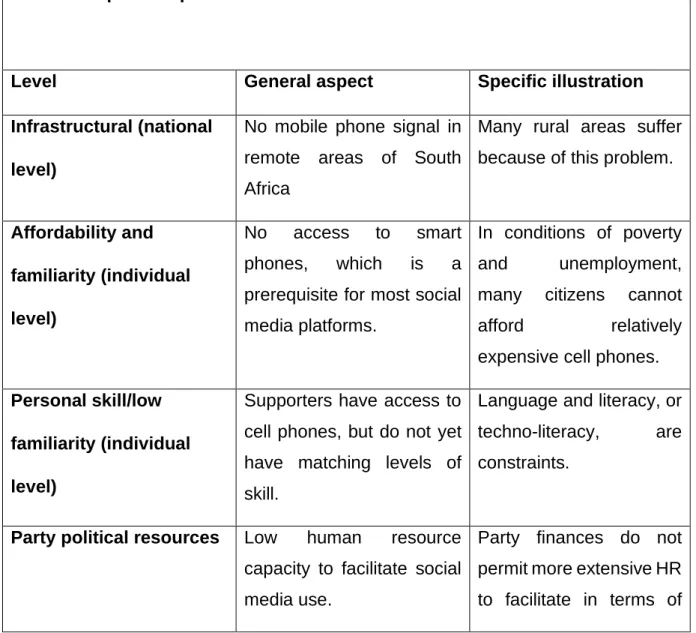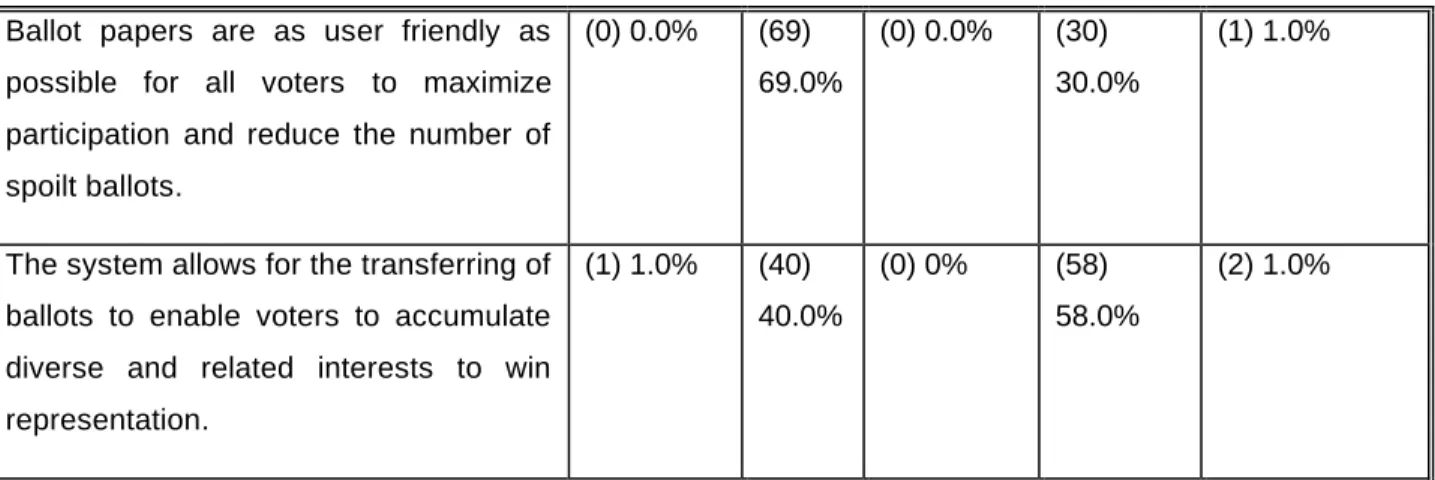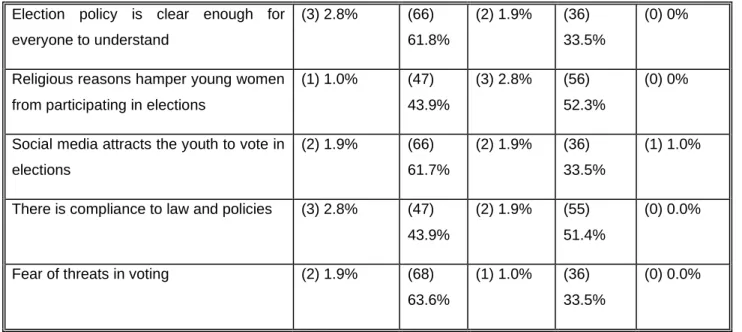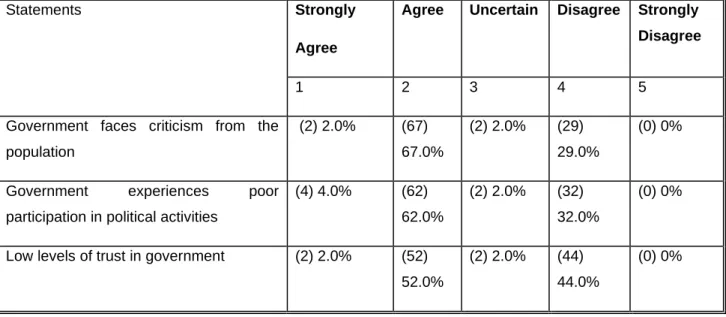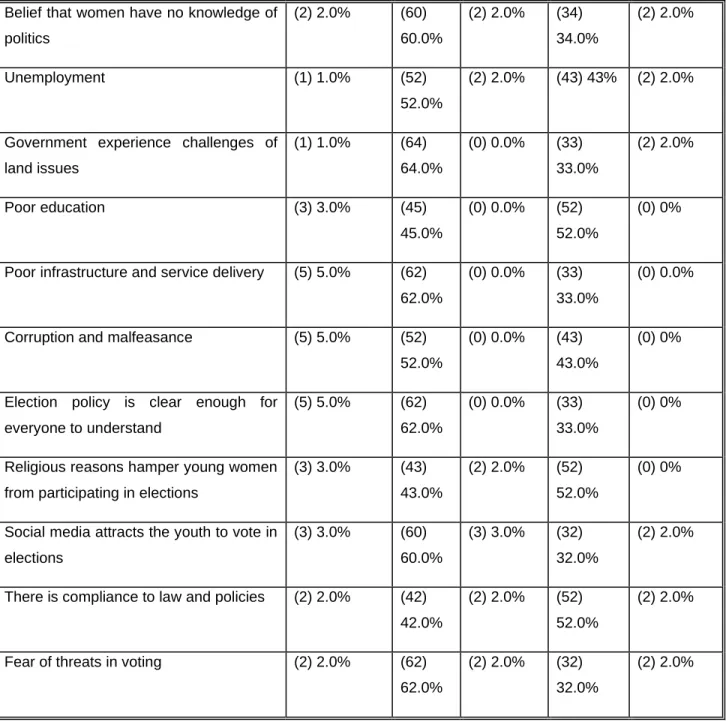This research examines the impact of political apathy on voter turnout in Namibia and South Africa, focusing on the 2014 and 2019 national elections in both countries. Definition of concepts in this study will help to assess and understand the political apathy among South African and Namibian youth, a case study of the 2014 and 2019 national elections.
Introduction
The South African National Congress (ANC) completely dominates the political landscape of their respective countries. Griffiths says that South West Africa was mandated by the League of Nations for South Africa.
Background and outline of the research problem
With Namibia, an important context for the 2014 poll was that the country had just made changes to both the constitution and the electoral law (Electoral Commission of Namibia assessment and postal election report 27 November 2015). Namibia does not fare well in terms of youth participation in politics compared to other sub-Saharan countries.
Preliminary literature review
Voter turnout across the world
For national elections, figures based on the 2010 UK election (Ipsos Mori 2010) show that there was a seven per cent increase in the number of 18- to 24-year-olds voting in the general election (ie 44%). Several studies have attempted to elucidate the effects of youth, generation and tenure on turnout in national elections. 2004) found the effects of age as well as generation on changes in turnout in Canadian elections.
Reasons for choosing this topic
In South Africa, young people are negatively affected by several socio-economic deprivations, including inaccessibility to the labor market and lack of representation in the policy-making space. If this does not change its landscape, the youth will not be interested in the 2024 national elections.
Research problem and objectives: key questions to be asked
- Statement of the problem
- Research questions
- Research objectives
- Scope of the study
The systematic exclusion of the youth in political affairs and the participation behavior of the young people in contemporary Africa has serious consequences, which may have led to youth activism today (Enaifoghe 2019). The involvement and their empowerment in state politics, for socio-economic development is essential to build a sense of responsiveness and accountability in government. Does the feeling of exclusion from access to the land affect turnout among young voters in South Africa and Namibia?
Principal theories of the study
The Civic Mobilisation Model
To assess the sense of exclusion from entering the country affects turnout among young voters in South Africa and Namibia. Identify and describe factors that have shaped and defined voter apathy and voter support in South Africa and Namibia, respectively.
The Public Choice Theory
It is therefore important for them to be knowledgeable about the government and willing to participate in the electoral process. Votes are expected given the long haul and transitory influences they have been exposed to throughout their lives (Wolf 2010).
Ethical issues
Structure of the research
Chapter Four: Comparison of South African and Namibian Elections 2014 and 2019 This chapter outlined and compared youth issues related to elections in South Africa and Namibia, both under apartheid and since the beginning of democracy.
Introduction
Elections in developed countries
In Sweden, as in most established democracies, voter registration and VAP statistics are very close. In contrast, there was a large gap between voter registration and VAP statistics in Egypt during the period 1976–2012.
Elections in developing and Southern Africa countries
Going back to the findings, 60% of respondents disagreed with the statement that ballots were more complicated. Youth representatives of political parties in the parliaments have indicated that they are the future leaders of the South African and Namibian parliaments.
![Figure 3 United States voting according to race and age [Source: Grinspan and Jon (2016)]](https://thumb-ap.123doks.com/thumbv2/pubpdfnet/10328604.0/40.918.121.784.166.418/figure-united-states-voting-according-race-source-grinspan.webp)
Comparison in Voter turnout in developed countries
The low turnout of youth and a comparison with several countries, such as older and
Congressional voting trends by race and age in the United States, 1966-2010
Overall, voter turnout has been declining for all age groups in US elections, but the biggest decline has been among young people (spring 2006). However, while activities related to conventional politics have declined, young people have become interested in political issues (Henn and Foard 2012) and different types of political involvement (O'Toole 2003).
Mechanisms of affective influence on voting
However, young people generally show low turnout in elections, a lack of trust in democratic institutions and signs of suspicion and negativity towards politicians and political parties (Dalton 2008). First, the gap is caused by life cycle and generational effects; moreover, through more engaging forms of participation, more young people have diverted their energies from conventional forms of political support favored by the elderly; and third, that there is a difference in the way young people embrace politically related organizations as opposed to older people.
Methods of voting
Whiteley (2012) suggests that if only a few people vote in elections, the state will lose its authenticity and will not be able to convince its citizens to participate in the affairs of government. Another challenge will be that any generational disparity in levels of involvement in voting will generally lead politicians to place little importance on youth policy issues (Mycock and Tonge 2012).
Voting patterns of youth in Namibia and South Africa
Registration among young people in South Africa
- Young registered voters
South Africa's rapid population growth has changed the demographic distribution of eligible voters in recent elections. South Africa's 2013 population estimates indicated 10.9 million eligible voters between the ages of 18 and 29, representing 34% of the democratic age population.
Registration among young people in Namibia
This significantly lower level of youth electoral participation is highlighted when looking at turnout in the 2011 municipal elections as a percentage of the country's total population – only 28% of the country's total 20 to 29 year old population participated to these elections. The districts additionally recorded the most reduced voter registration results with 3466 voters registered in the Kabbe constituency of the Zambezi area and 3534 voters in the Epukiro district of the Omaheke area.
The factors affecting the turnout of youth in election systems
Factors contributing to youth voting turnout
- Lack of political knowledge
- Lack of political engagement
- Socio-economic status
- Religion, ethics, and diversity
- Socio-demographic factors
- Interest in politics
- Land Issues
- Media influence and trust in the system
- Technological implications
To address this, it is crucial to develop a tool to assess the level of political potential among today's youth (Pontes, Henn, and Griffiths 2016). According to Flanagan and Levine (2010), concerns that are important to many young people are in the political discourse and political parties are taking positions on them.
Reasons for not voting
Improving the youth voting system
These types of systems require voters to mark their votes on paper with a pencil or marker or to remove votes from a punched card (Kohno, Stubblefield, Rubin, and Wallach 2004:27). These types of systems allow voters to vote from computers/ATM-like machines located inside kiosks.
Summary
Introduction
It is important that governments recognize the issues that drive young people to resist voting, and instead inspire and motivate them to vote. Other theories for discussion are Social Choice theory; Theory of Choice Behavior; Democratic Theory, Political Theory; and Economic Theory.
Social Choice Theory
Participation as a rights-based practice based on the fact that young people are seen as holders of rights, including the right to participate in politics and decision-making. This approach is based on the understanding that young people are best aware of their needs and have innovative ideas.
Behavioural Theory of Elections
Klass (2016) agrees that, independently of the cultural dimensions mentioned above, parents play a key role in the voting behavior of young individuals. Nevertheless, most proponents of this view acknowledge the numerous studies on the role of intrinsic biases in voting behavior.
Democratic Theory
Political trust is not only an indicator of the quality of democracy; it is also essential for the process of democratic governance, given that the legitimacy of representative democracy determines the political attitudes of citizens towards institutions and politicians. Political trust is an important indicator of political legitimacy, which is needed for a democracy to be stable and effective.
Political Theory
Furthermore, many studies conclude that young people have relatively lower levels of political knowledge than their older contemporaries and have a clear lack of interest in (formal) politics. What is certain is that young people's perceptions of politics and their extent of involvement have changed.
Economic Voting Theory
Studies have analyzed how local economic conditions affect electoral choice, which raises concerns because the theoretical component of the literature on economic voting considers local economic conditions to be important. Examples of this include the state of the economy, government performance or the personality of the candidate.
Summary
However, most research on economic voting focuses on the influence of national conditions or individual well-being on voting decisions. According to the Economic Voting Theory, when making voting decisions, voters are primarily influenced by their economic conditions.
Introduction
Background of youth in South Africa and Namibia
A total of 61% of the respondents disagreed with the statement that the ballots are complex. However, some of the respondents indicated that the South African and Namibian governments do not have the means to address issues of voter apathy among the youth.
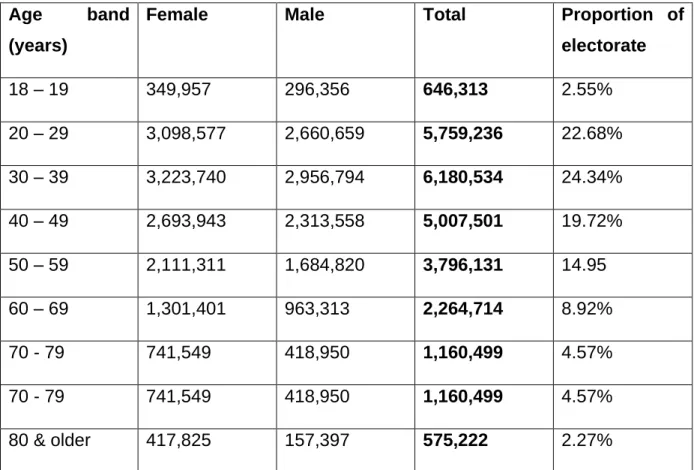
Youth in South Africa
Youth in Namibia
Youth participation in politics and elections in Namibia
In 2012, ECN produced a report to quantify the level of public understanding of discretionary and popularity-based projects and the feasibility of the projects (ECN 2012). The report assessed progress on ECN's citizen schooling points and goals, focusing on levels of understanding of majority rule government and popularity-based processes; public and voter confidence in the discretionary framework; violation of basic procedures; participation in public, local and neighborhood meetings; voter education email; success in choosing state transport; orientation and individuals with disabilities in electoral processes; the contribution of young people; and the viability and effectiveness of the legal structure (ECN 2012).
South African youth participation in the 2014 elections
Youth perceptions towards participation in politics and elections in Namibia
Aspects of youth participation in Namibia’s election in 2014
President Hage Geingob won office in a landslide victory, with 87 percent of the popular vote, in 2014. This aging of the political system is seen in the adherence of presidents to term limits, the precedent of which is Namibia's second president , Hifikepunye, was created. Pohamba, who retired in 2015.
Namibia engaging youth in political new media
Of the 107 responses received from South African respondents, 78% agreed that the electoral system design databases provide comparative data in South Africa. Due to the corrupt activities of government officials in South Africa and Namibia, they failed to cater to the needs of the youth and failed to involve the youth in politics.
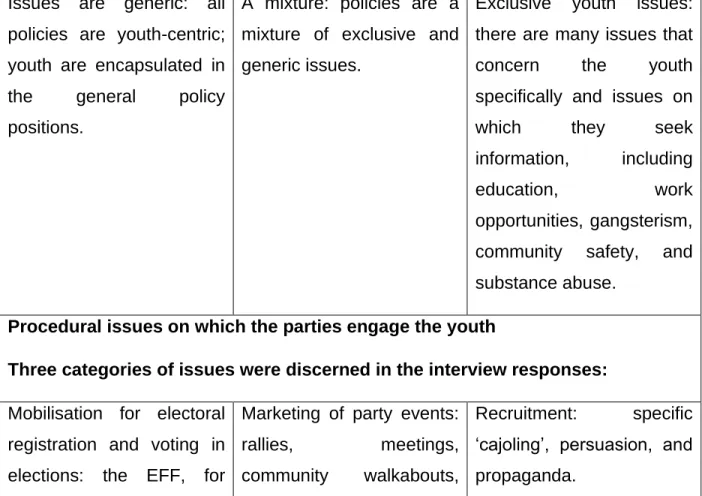
South African general election (General Election, May 8 2016)
Political and civic engagement of African youth
Reasons for youth not voting in South Africa
They are ignored by candidates: if young people do not vote, they are less likely to be targeted by political campaigns. They feel their voice is not being heard: Young people in South Africa do not feel heard.
Constraints of Namibian youth in politics
Challenges and lesson learnt in Namibia
Voter information feedback loop in South Africa
Challenges and lesson learnt in South Africa
Summary
Introduction
Research approach
- Transformative Paradigm
- Research design and methods
- Research design and methods
- Population and sampling
- Data collection process
- Questionnaire as a data collection instrument (quantitative research)
- Interviews as a data collection instrument (qualitative research)
- Data analysis methods
- Validity and reliability
The researcher used summative content analysis as the study involved summarizing themes from the participants' responses. In this research, the researcher used internal validity to ensure the consistency of the research results with reality.
Limitations of the research
According to Kekana, the validity of information is described "as the honesty and accuracy of the information and the reliability of how reliable the information is." In this study, the researcher used triangulation as a method that ensures accurate and reliable data collection and that the questionnaires are distributed to the right participants; ie South African and Namibian government officials and selected individuals in the South African and Namibian IECs.
Ethical issues in mixed research methods
The researcher obtained the necessary documents from the University of KwaZulu-Natal and the IECs of Namibia and South Africa confirmed the purpose of the study. The researcher asked the university for a letter of consent, which was submitted to the intended branches and youth formations of the political parties represented in the South African and Namibian parliaments and to the IECs of South Africa and Namibia.
Summary
The e-mail addresses of the participants were obtained from the websites of the institutions in the target group. The results of the quantitative and qualitative data allowed for a better understanding of the issues related to youth voter apathy in South Africa and Namibia.
Introduction
Part 1: Responses from government officials in South Africa and Namibia
Response rate
Of the 107 responses received from respondents from South Africa, 70% of them agreed that the government faced criticism from the population in both countries; 66%. The same applies to the level of interest of young people in politics and the involvement of young people in both countries in politics.
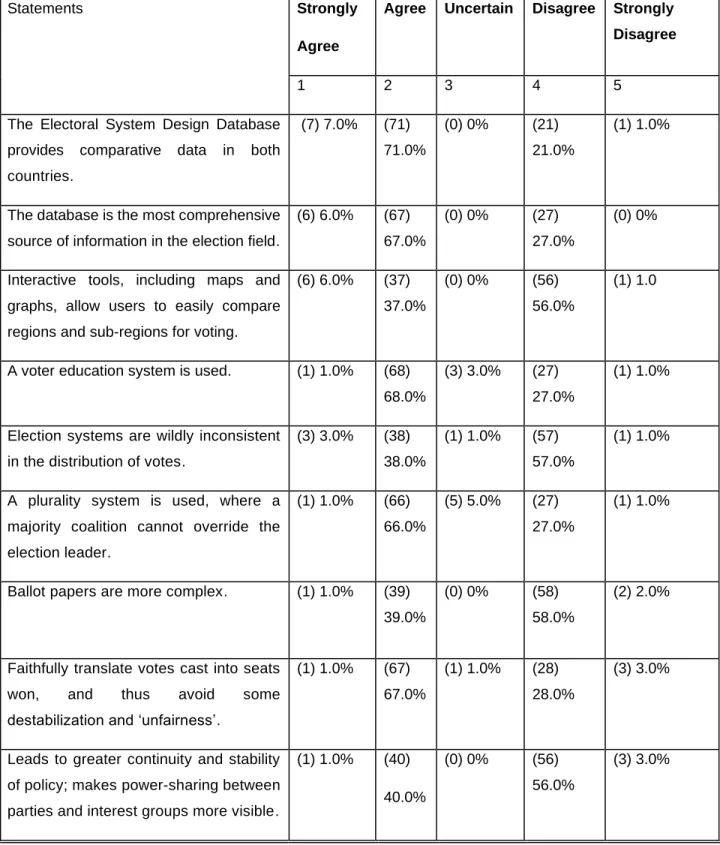
Gender of respondents
Age groups of respondents
Job status of respondents
Highest qualification of respondents
Number of years employed at your organisation
Section respondents work in for government
Part 2: Responses of youth of political parties represented in the South African and
Response rate
Gender of respondents
Age groups of respondents
Job status of respondents
Highest qualification of respondents
Number of years employed at the organisation
Section respondents work in for government
Part 3: Thematic responses from both the government officials and political youth
From the above comments from South African and Namibian government officials and youth representatives of political parties in parliaments, there was a recurring theme that was seen as an obstacle in the view of the respondents, namely From the above comments from South African and Namibian government officials and youth representatives of political parties in parliament, a recurring theme emerged regarding the voting systems in both countries.
Reliability testing
The table above highlights the Cronbach Alpha coefficients for the two instruments, which were administered to government officials and youth political representatives in the parliaments of South Africa and Namibia. Cronbach's coefficients are respectively in the range of .969 and .961 for each instrument used in the research for data collection.
Summary
This means that the measuring instruments presented excellent internal consistency reliability for the scale with this sample. The next chapter contains the study's brief overview, findings, suggestions and the conclusion of the study.
Introduction
Discussion of findings of the quantitative research
Electoral systems used in South Africa and Namibia
Factors shaping and defining voter apathy and voter support in South Africa and
The South African government’s response to youth voter apathy during elections
The new theoretical perspectives in the context of youth political participation
Discussion of the findings of the qualitative research approach
Varying youth interest in the political and voting environment
Issues of youth voter apathy
Voting systems for South Africa and Namibia
Single voting systems for South Africa and Namibia
COVID-19 measures to be adopted during the election period
Guiding principles for an effective electoral system
Framework of the quantitative and qualitative research paradigms
Finalised framework of the quantitative and qualitative research paradigms
Summary
Limitations of the study
